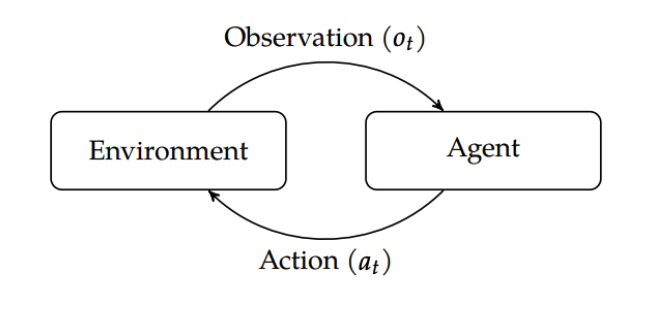What’s the Difference Between Generative AI and Agentic AI?
Understand the next evolution of artificial intelligence. Learn how generative AI differs from agentic AI—how agents move beyond content creation to autonomous reasoning and action—and why this shift defines the future of enterprise AI.


Over the past two years, generative AI (genAI) has transformed how humans interact with computation. Large language models (LLMs) such as ChatGPT, Claude, Gemini, and Midjourney exemplify systems capable of producing fluent, contextually coherent text, images, or code from simple natural-language prompts.
Agentic AI represents a structural and functional evolution beyond generative systems. Instead of merely predicting, these systems reason, plan, and act across time to achieve defined goals with minimal human intervention.
In this blog, I will dissect the key differences between genAI and agentic AI.
Key Differences of GenAI and Agentic AI at a Glance
What is Generative AI?
From a probabilistic standpoint, a generative model is one that learns the joint probability distribution over observed and latent variables:
P(X,Y)
where X denotes the observable data (e.g., an input) and Y denotes latent or target variables. By modeling how data is generated, such models can sample new instances consistent with the underlying distribution.
In modern deep learning systems (especially large language models) the generative process is often implemented as an autoregressive conditional model:

which predicts each token yt given all previous tokens y<t and, optionally, an external condition X. Although technically conditional, these models are called generative because they can synthesize new, coherent sequences that is effectively sampling from the learned distribution of human language.
In practical terms, today’s generative AI models are reactive: they take an input, generate an output, and stop.
In this paradigm, the human remains the agent. Humans define the objectives, decompose tasks, and iteratively refine prompts.
The LLM’s “intelligence” is bounded by single-step inference over a fixed context window, lacking persistence or long-term goals. In short, while genAI is highly expressive, it is contextually myopic.
What is Agentic AI?
Formally, an agentic AI system can be modeled as a closed-loop control process:
Perception→Reasoning→Action→Feedback

where each stage can involve external tool use, environment interaction, and recursive reflection.
Unlike static text generation, agentic AI involves sequential decision-making under uncertainty. This is a concept rooted in reinforcement learning and control theory. An agent determines what to do, how to do it, and when to do it, often using a tool-use layer that interfaces with APIs, browsers, or databases.
- Generative: “Turn this meeting transcript into notes.”
- Agentic: “Parse the transcript, extract decisions and owners, update the roadmap in Jira, add two milestones in the release plan, and post a summary with blockers in the team channel.”
The distinction lies not in linguistic fluency, but in autonomy and goal-directed behavior.
Why Agentic AI Matters
Agentic AI enables the automation of cognitive workflows that previously required continuous human supervision. It shifts the paradigm from prompt-and-response to goal-and-execution.
In enterprise settings, this evolution supports agents that:
- Maintain and update CRMs autonomously
- Detect compliance risks and generate reports
- Troubleshoot IT incidents in real time
However, greater autonomy also expands the risk surface. Agents capable of autonomous execution can perform unintended or unsafe actions, raising concerns around zero-click exploits and prompt injection vulnerabilities. Therefore, agentic AI must be built atop rigorous security, governance, and reliability frameworks that control what actions are permitted, verified, and auditable.
From Generation to Action: A Shift in Architecture
This evolution is not merely algorithmic, it’s architectural. Agentic systems rely on layered components that enable reasoning, persistence, and safe execution beyond the LLM core:
- Memory Modules — store long-term user goals and contextual state across interactions.
- Orchestration Frameworks — such as LangChain, LlamaIndex, or CrewAI, that manage multi-step reasoning, task decomposition, and workflow control.
- Unified Access Protocols (e.g., Model Context Protocol) — define a standardized way for models to securely access external tools, APIs, and contextual data, unifying how components communicate rather than orchestrating their logic.
- Guardrails and Policy Engines — enforce safety, compliance, and transparency by constraining or verifying agent actions.
Together, these components create a cybernetic architecture: a closed feedback loop in which the system senses, reasons, acts, and learns. It behaves more like a digital coworker than a chatbot.
The Next Frontier: Agent-to-Agent (A2A) Collaboration
As agentic systems mature, a new paradigm is emerging: Agent-to-Agent (A2A) collaboration.
Rather than a single agent handling every step, multiple specialized agents can coordinate through shared orchestration frameworks and common protocols like MCP, which provide a consistent way to access tools and exchange context across systems.
For example, a research agent could gather information, a reasoning agent could synthesize insights, and a compliance agent could validate that the output meets enterprise policies. All of these agents are working autonomously and they’re interacting without direct human intervention.
This multi-agent ecosystem transforms isolated intelligent tools into collaborative digital organizations, where agents communicate, reason, and act collectively toward complex goals.
A2A marks the next logical evolution, from reactive generation → proactive action → coordinated intelligence.
The Bottom Line
Generative AI revolutionized creation; Agentic AI will revolutionize operation.
The future of enterprise AI lies in autonomous, policy-aware systems that collaborate with humans, execute complex objectives, and adapt dynamically to organizational context.
As enterprises evolve from text-generation tools to autonomous agents, success will depend on three pillars:
- Trust — verified reasoning and transparency
- Safety — prevention of unintended autonomous actions
- Governance — alignment with enterprise and ethical standards
The age of generative AI gave us creators.
The age of agentic AI will give us collaborators.
Over the past two years, generative AI (genAI) has transformed how humans interact with computation. Large language models (LLMs) such as ChatGPT, Claude, Gemini, and Midjourney exemplify systems capable of producing fluent, contextually coherent text, images, or code from simple natural-language prompts.
Agentic AI represents a structural and functional evolution beyond generative systems. Instead of merely predicting, these systems reason, plan, and act across time to achieve defined goals with minimal human intervention.
In this blog, I will dissect the key differences between genAI and agentic AI.
Key Differences of GenAI and Agentic AI at a Glance
What is Generative AI?
From a probabilistic standpoint, a generative model is one that learns the joint probability distribution over observed and latent variables:
P(X,Y)
where X denotes the observable data (e.g., an input) and Y denotes latent or target variables. By modeling how data is generated, such models can sample new instances consistent with the underlying distribution.
In modern deep learning systems (especially large language models) the generative process is often implemented as an autoregressive conditional model:

which predicts each token yt given all previous tokens y<t and, optionally, an external condition X. Although technically conditional, these models are called generative because they can synthesize new, coherent sequences that is effectively sampling from the learned distribution of human language.
In practical terms, today’s generative AI models are reactive: they take an input, generate an output, and stop.
In this paradigm, the human remains the agent. Humans define the objectives, decompose tasks, and iteratively refine prompts.
The LLM’s “intelligence” is bounded by single-step inference over a fixed context window, lacking persistence or long-term goals. In short, while genAI is highly expressive, it is contextually myopic.
What is Agentic AI?
Formally, an agentic AI system can be modeled as a closed-loop control process:
Perception→Reasoning→Action→Feedback

where each stage can involve external tool use, environment interaction, and recursive reflection.
Unlike static text generation, agentic AI involves sequential decision-making under uncertainty. This is a concept rooted in reinforcement learning and control theory. An agent determines what to do, how to do it, and when to do it, often using a tool-use layer that interfaces with APIs, browsers, or databases.
- Generative: “Turn this meeting transcript into notes.”
- Agentic: “Parse the transcript, extract decisions and owners, update the roadmap in Jira, add two milestones in the release plan, and post a summary with blockers in the team channel.”
The distinction lies not in linguistic fluency, but in autonomy and goal-directed behavior.
Why Agentic AI Matters
Agentic AI enables the automation of cognitive workflows that previously required continuous human supervision. It shifts the paradigm from prompt-and-response to goal-and-execution.
In enterprise settings, this evolution supports agents that:
- Maintain and update CRMs autonomously
- Detect compliance risks and generate reports
- Troubleshoot IT incidents in real time
However, greater autonomy also expands the risk surface. Agents capable of autonomous execution can perform unintended or unsafe actions, raising concerns around zero-click exploits and prompt injection vulnerabilities. Therefore, agentic AI must be built atop rigorous security, governance, and reliability frameworks that control what actions are permitted, verified, and auditable.
From Generation to Action: A Shift in Architecture
This evolution is not merely algorithmic, it’s architectural. Agentic systems rely on layered components that enable reasoning, persistence, and safe execution beyond the LLM core:
- Memory Modules — store long-term user goals and contextual state across interactions.
- Orchestration Frameworks — such as LangChain, LlamaIndex, or CrewAI, that manage multi-step reasoning, task decomposition, and workflow control.
- Unified Access Protocols (e.g., Model Context Protocol) — define a standardized way for models to securely access external tools, APIs, and contextual data, unifying how components communicate rather than orchestrating their logic.
- Guardrails and Policy Engines — enforce safety, compliance, and transparency by constraining or verifying agent actions.
Together, these components create a cybernetic architecture: a closed feedback loop in which the system senses, reasons, acts, and learns. It behaves more like a digital coworker than a chatbot.
The Next Frontier: Agent-to-Agent (A2A) Collaboration
As agentic systems mature, a new paradigm is emerging: Agent-to-Agent (A2A) collaboration.
Rather than a single agent handling every step, multiple specialized agents can coordinate through shared orchestration frameworks and common protocols like MCP, which provide a consistent way to access tools and exchange context across systems.
For example, a research agent could gather information, a reasoning agent could synthesize insights, and a compliance agent could validate that the output meets enterprise policies. All of these agents are working autonomously and they’re interacting without direct human intervention.
This multi-agent ecosystem transforms isolated intelligent tools into collaborative digital organizations, where agents communicate, reason, and act collectively toward complex goals.
A2A marks the next logical evolution, from reactive generation → proactive action → coordinated intelligence.
The Bottom Line
Generative AI revolutionized creation; Agentic AI will revolutionize operation.
The future of enterprise AI lies in autonomous, policy-aware systems that collaborate with humans, execute complex objectives, and adapt dynamically to organizational context.
As enterprises evolve from text-generation tools to autonomous agents, success will depend on three pillars:
- Trust — verified reasoning and transparency
- Safety — prevention of unintended autonomous actions
- Governance — alignment with enterprise and ethical standards
The age of generative AI gave us creators.
The age of agentic AI will give us collaborators.
Click to Open File
similar resources

Secure your agentic AI and AI-native application journey with Straiker
.avif)










